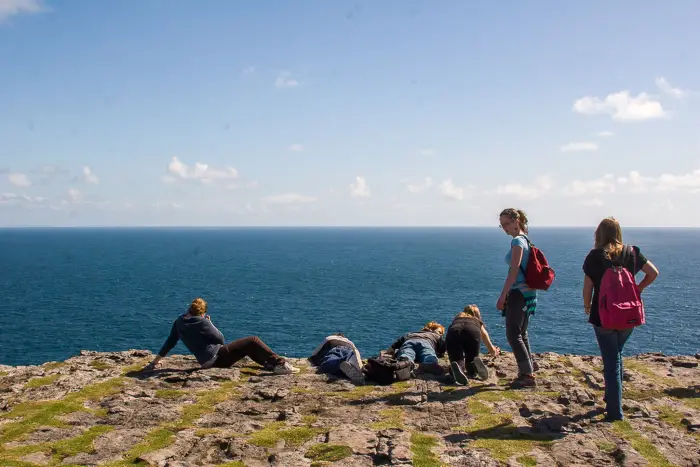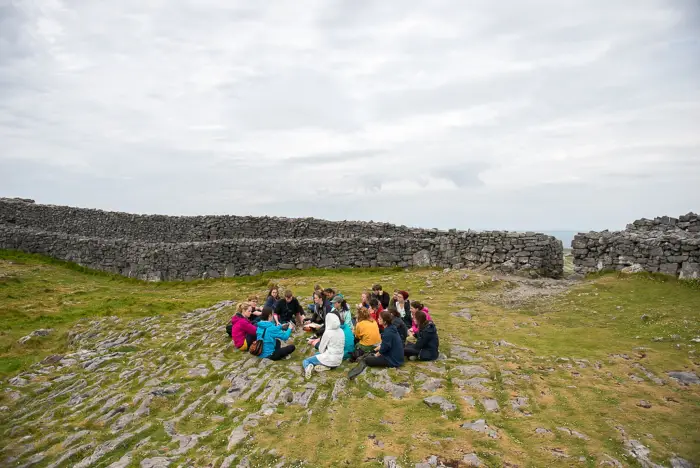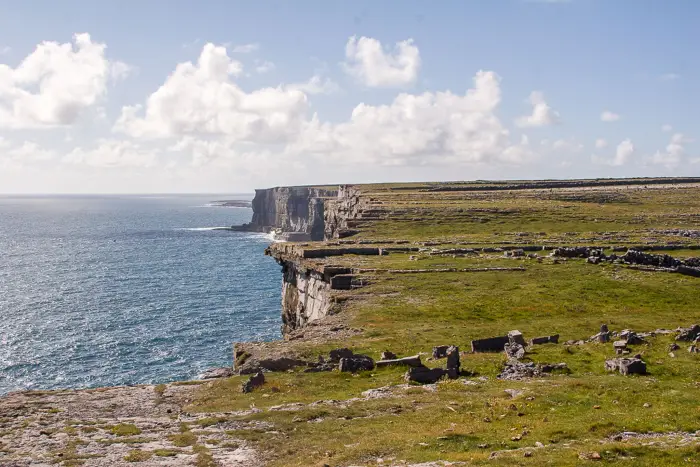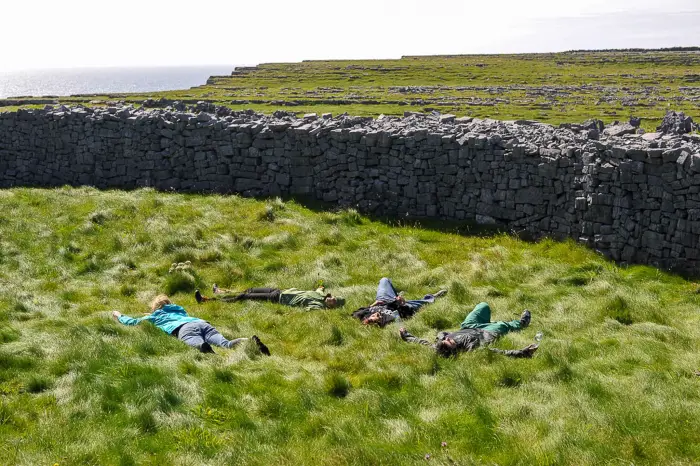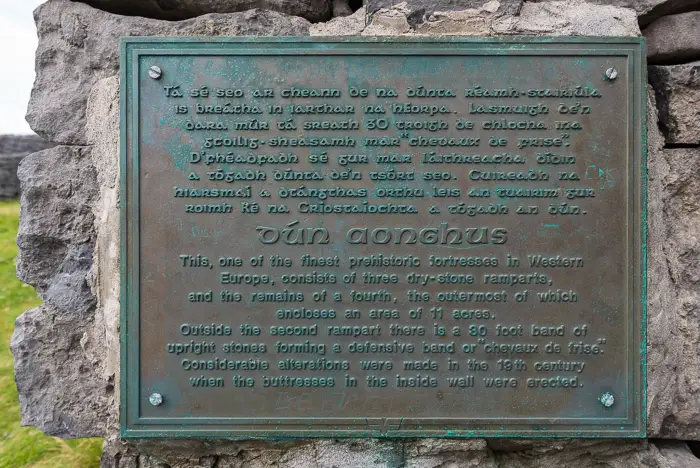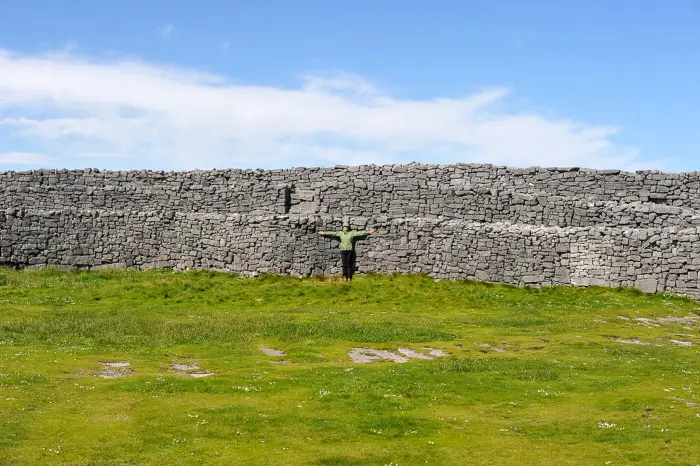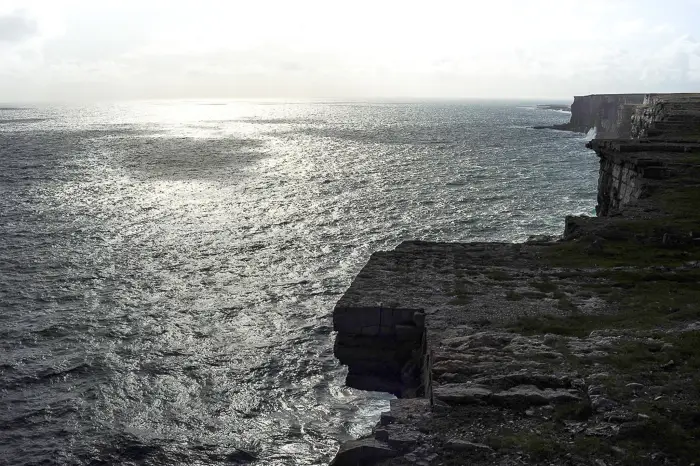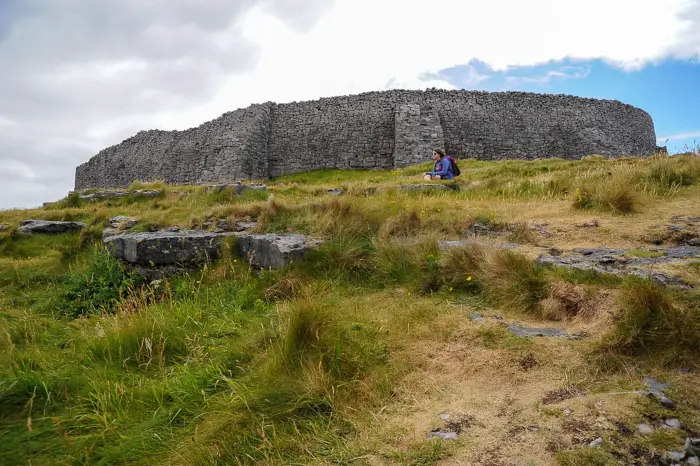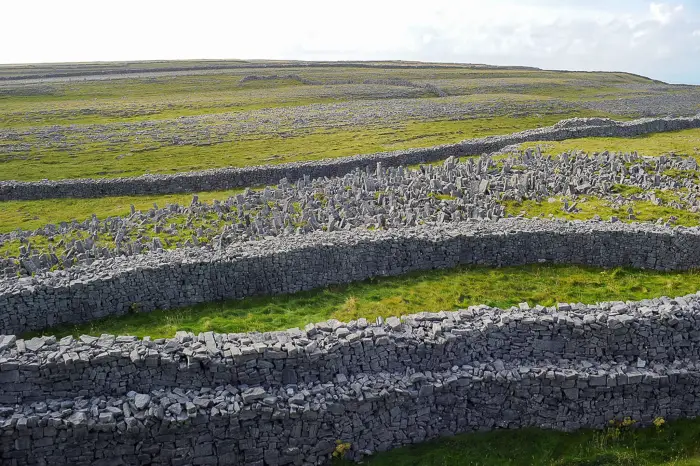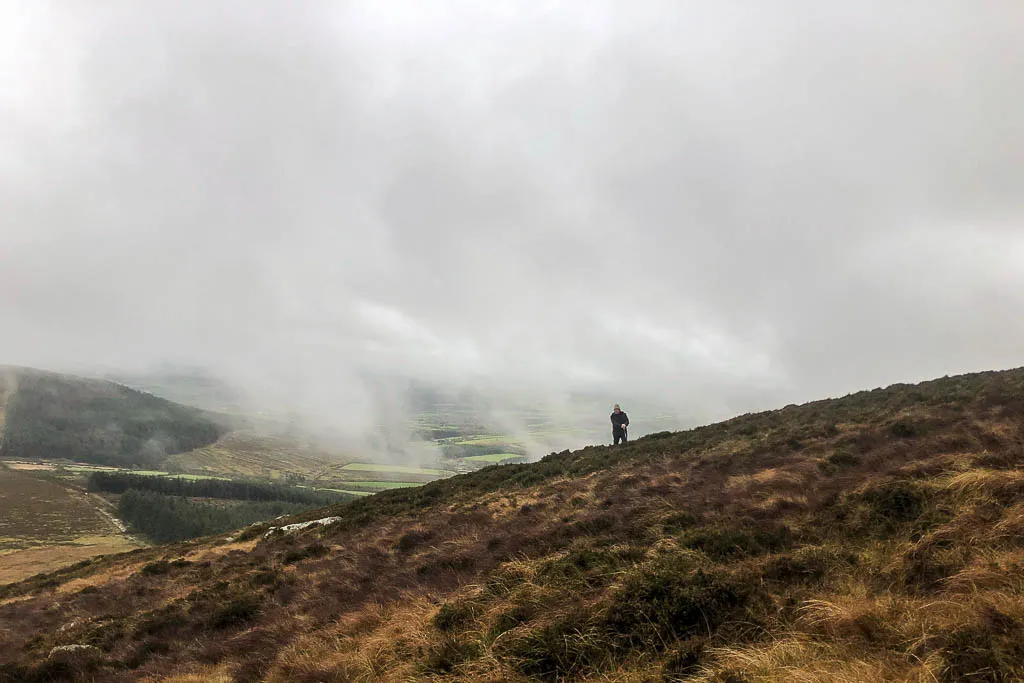Dún Aonghasa
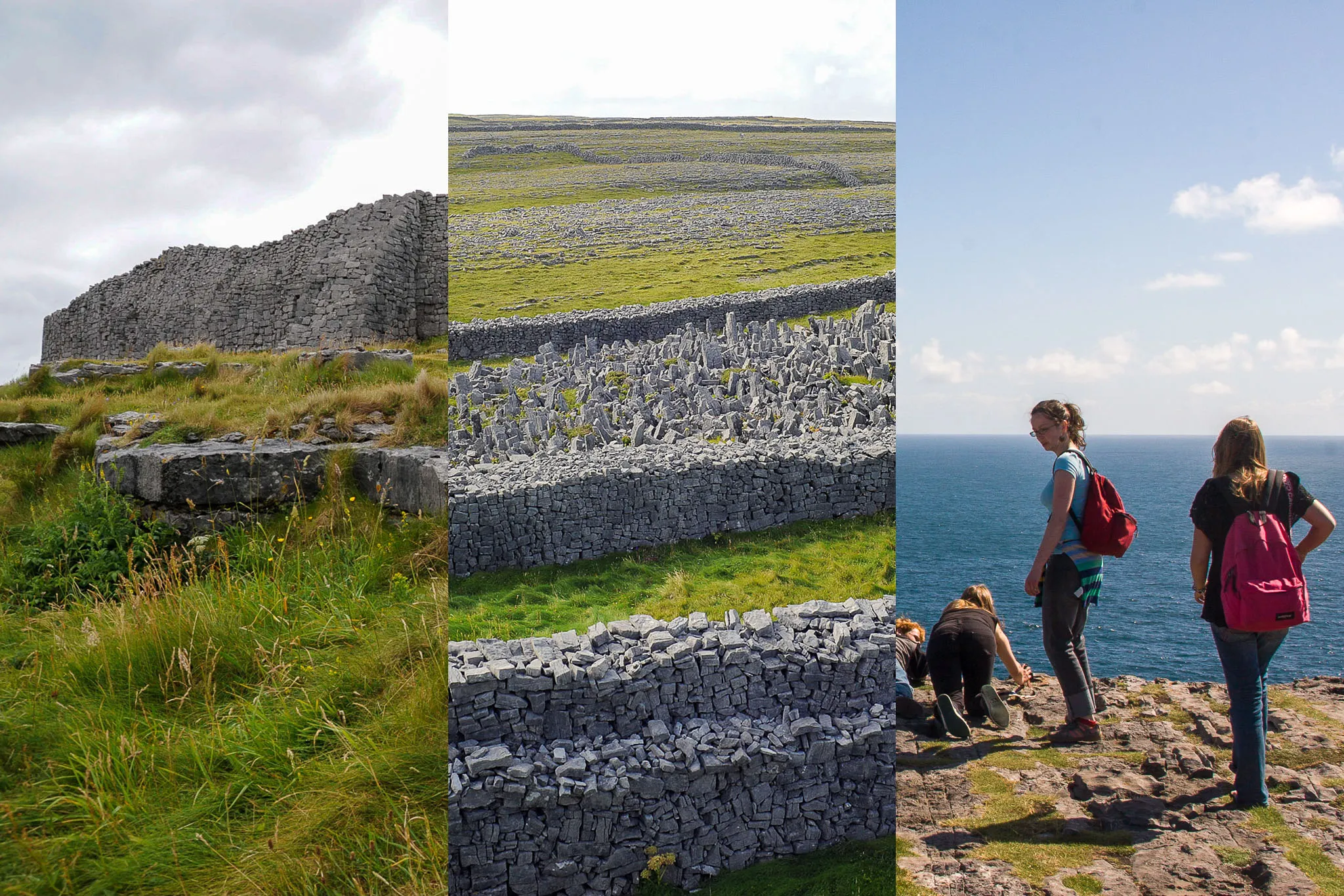
One of our absolute favorite places to visit is the prehistoric hill fort of Dún Aonghasa on Inis Mor, the largest of the three Aran Islands just off the coast of Galway. Perched in a stunning location at the edge of a 300ft high cliff, Dún Aonghasa is a breathtaking place for its natural beauty and complex history. Year after year, it instills a sense of wonder and awe in those with whom we may share this remarkable place.
Since our first summer session hosting Art on the Farm, we have visited Dún Aonghasa and now take our gap yearstudents as well. When our residency artists or other visitors ask for recommendations of places to visit, Inis Mor, and in particular Dún Aonghasa is always top of the list.
Accessed by ferry, Inis Mor is a two and a half hour journey from Galway, but the pilgrimage to get there is well worth it. Time is marked by stones throughout the island of Inishmore, by prehistoric forts, early Christian churches, and graveyards. A web of winding dry stone walls denotes fields farmed for generations. Stone monuments commemorate fishermen lost at sea.
We recommend renting bikes to explore the island, with Dún Aonghasa always our first destination. We often experience showers of rain as we cycle the 6km from Kilronan village to the fort. Still, the weather changes quickly as the wind swiftly moves the clouds. The cycle along the coastal road is not too strenuous. It allows everyone to soak up the dreamy landscape and pause at the crystal clear waters at Kilmurvey beach for a swim before the short hike to Dún Aonghasa.
From the visitor center, we follow a winding path, and as you reach the top, the hill steepens, and a doorway marks the entrance to the site. We always make sure to take a moment here and turn around to see the view of the island. From this vantage point, one can see the entire width of the island, the flat karst landscape, dotted with houses, wind-beaten trees growing sideways all under a vast sky of puffy white clouds. With such a vantage point, it’s clear to see why ancient Celts chose this site.
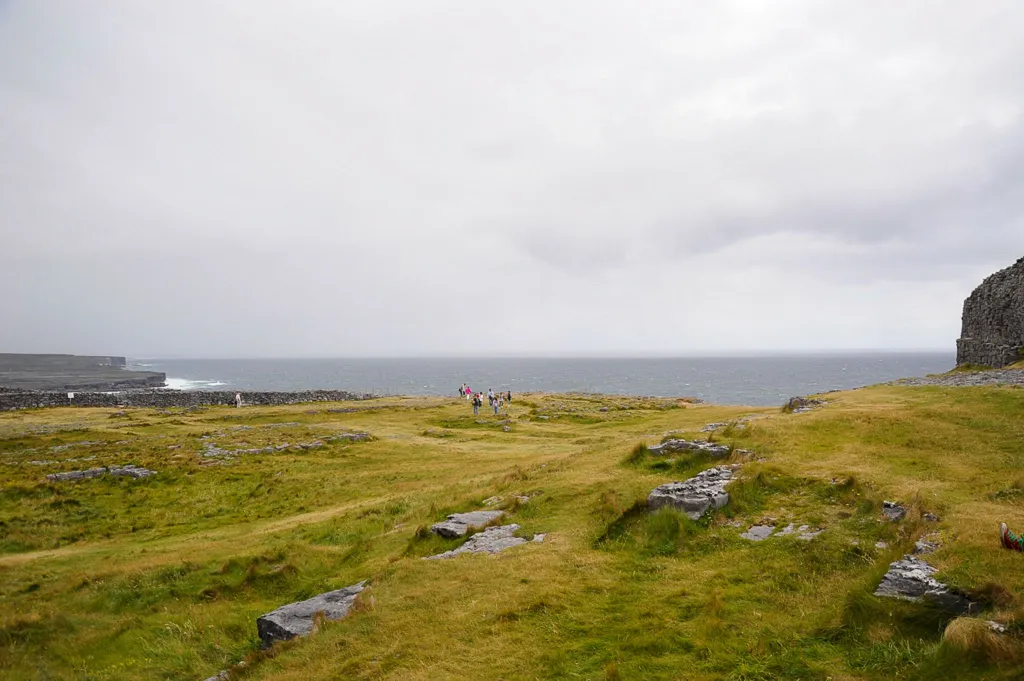
MAP EMBED BLOCK
Once through the passageway, the site opens into a large grassy area, and the fort lies up a slight incline. Dún is the Irish word for fort, and Aengus, the Young One, who was the Celtic god of love, youth, and poetry, is to whom this construction is dedicated. The fort consists of three massive dry-stone walls and a chevaux-de-frise, a densely packed band of jagged, upright stones, surrounding the fort from cliff to cliff, designed to impede attackers. Originally constructed c.1100BC, it was re-fortified around 700-800 AD, and excavations revealed evidence of prehistoric metalworking, as well as several houses and burials.
There is always a guide present to answer questions and ensure safety as there is no fence or barrier at the cliff edge. Each year we learn something new from these guides, the location of an ancient cooking stone, where the remains of stone huts once stood, or where they found the remains of a child. One year, we were fascinated to learn how the semicircular form of the fort can, on occasion, create the effect of a “natural dome.” When light rain falls, and the wind rushes up the cliff’s side, it pushes the droplets away from the open area above, which creates a virtual shelter from the wet.
There is always a natural curiosity to look over the edge, so after a safety demonstration, students shimmy close to the ground, slowly approaching the edge to peer over the cliff’s side. The sound and sight of the waves crashing are calming and hypnotic, and we often linger a long time to enjoy the moment. Choosing to visit mid-week and towards the late afternoon means we are often the only visitors at the site, which adds to the memorable experience.
For our guests of legal drinking age, the pint back in the village at the Bar beside Kilronan Hostel overlooking the picturesque harbor is particularly satisfying. Especially on a sunny summer afternoon. We have been making this trip for 12 years now, and it has never gotten old. We don’t imagine it will.
